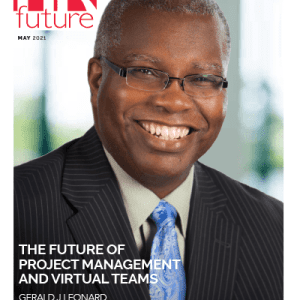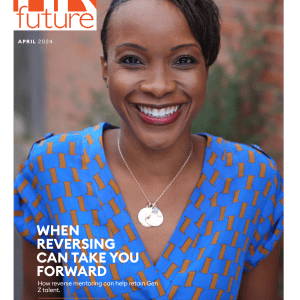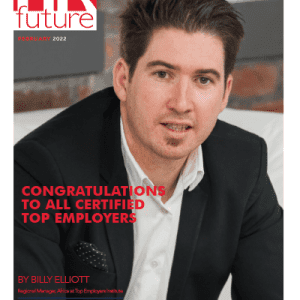An integrated approach to merging three current generations in the workplace – GEN Z, GEN X and Millennials.
“How old are you?”
It’s not a question you’re typically asked by a boss or a colleague, but your answer will likely reveal a great deal about your attitude to work. If you are a “Gen X” or a “Millennial” (born between 1965-1980 and 1981-1996 respectively) you’ve spent most of your working life in an office. You know what it’s like to have a zealous manager checking you’re at your desk and you’re well versed in gossip around the proverbial water cooler. Dare we say it, you might even be in charge.
But if you were born a member of “Gen” Z from 1997 onwards, your experience is markedly different. On Monday mornings, when the boss struggles to get the camera working on the weekly Zoom call, you’re playing the role of IT support, teaching the old guard how to use tools that come naturally to you. In-person meetings? Who needs them, you scoff. And when you’re called back into the office, you wonder what all the fuss is about. Surely working from home is the way forward?
Bounded instability
Herein lies the dilemma: while the old guard want things to go back to the way they were, young employees have joined the ranks remotely, in a COVID-affected world, with all the tools to do their work at home.
They baulk at a culture of unpaid overtime; they often question long hours in the office; and they’re keen to push an environmental and social agenda. In short, it’s not just about doing a job.
No, it’s about changing how it’s done – and who’s doing it. I call this schism “bounded instability”: there’s an inherent friction between old and new. In the former we have order, and in the latter, we have creative chaos.
Clearly, with greater numbers of Gen Z entering the South African workplace, there’s a culture clash of ideas at work. So how do we navigate this?
How to integrate three generations successfully
Here are nine key principles to keep in mind: principles that can lead to a more harmonious team.
- Move away from burnout culture. Gen Z staff know they need to perform but they haven’t grown up glamorising burnout culture. Instead, they’ve grown up with access to Linkedin and Glassdoor – portals that lift the lid on this unhealthy way of working. And let’s face it: forcing staff to burn the midnight oil doesn’t work; it drags down morale and produces inferior results. Rely on young people to use their smarts to get the work done on time. In return, give them the work-life balance they expect.
- Don’t be autocratic. The autocratic leader comes from a traditional leadership background where the idea is to speak the most, exert control and tell others what to do. This can have a negative impact on morale and motivation. It’s better to take a consultative approach. In that way, you can weigh up the opinions of staff and arrive at a democratic consensus that’s best for the group.
- Ask why
There’s a place for the office, and it’s especially useful for collaboration. But as a manager, you might only be satisfied someone is working when you see them at their desk. This is of course a fallacy, as offices can produce hours of unproductive busywork that fail to help the bottom line. So ask yourself: ‘Why are we doing what we’re doing?’.
You might be far better off letting employees work in a hybrid fashion: in-person days followed by periods at home. This will allow people to collaborate while also finishing off solo tasks in peace. A hybrid model will often lead to better ideas, which are gold dust in the Knowledge Economy.
- Look for answers everywhere – including from juniors. Gen Zs are smart, switched on and technologically savvy. They’re also the future – and by rights, part of the solution. Include them in decision-making conversations for a more inclusive culture and for more efficient ways of working. They’re coming in at a time when the answer doesn’t always sit at the top of an organisation. Technology has democratised the landscape.
- Remember that diversity means something very different to different generations. Gen Z has grown up in the most diverse South Africa ever. Even if a leader thinks they’re embracing diversity, are they really? Critically evaluate whether the faces and voices at the bottom of your company are reflected at the higher levels. If not, you haven’t truly transformed.
- Coach people out of biases. Young or old, we can all fall foul of biases. Senior staff might view youngsters as naive and perpetuate “adultism”; young staff might be “ageist”, believing their seniors are out of touch. Neither belief is helpful. Age doesn’t determine whether someone is wise or not. Experiences matter, and more importantly, our ability to reflect on those experiences. Try instead to foster a culture where people have one-to-one interactions and evaluate one another on their respective merits.
- Every generation pushes an agenda. Gen X leaders might have unrealistic expectations about working hours, but Gen Z juniors might have similarly unrealistic expectations about work/life balance. The key is not to shoot for these polar extremes, but to move the goalposts on to common ground. That way, we all rein ourselves in and find solutions that are sustainable for everyone.
- Create a relational environment. The best firms help their staff build relationships with one another. If all you’re doing is talking about work, you make assumptions about your colleagues. Human beings have an innate need to belong; to be a part of something bigger than themselves. Organisations that are highly relational run far more smoothly.
- Lean on Millennials. For all our differences, there are always going to be ideas that resonate across the different age generations. The idea of doing great work. Of doing work that means something. Of helping people and creating jobs. Of making a lasting impact. Millennials are the bridge generation. They can be intermediaries in this culture clash.
Looking to the future
I often ask clients: ‘five years from now, what kind of workforce will you have?’”
Logically, there will be more Gen Z employees, many of whom will be moving up the management chain. Indeed, these disruptive change-agents will one day become managers and leaders themselves, and their formative experiences in the workplace will shape the way they treat the generations to follow them.
Life is a cycle, then. But that doesn’t mean we need to rinse and repeat the mistakes of the past.
And if anything, I’m optimistic. Because of their upbringing, Gen Z may well be able to move past ‘affinity bias’ – the inclination to hire people who look and speak like them.
As you get older, it’s comforting to think that things will stay the same. But change is inevitable, and the pace of change is increasing all the time.
Julia Makhubela is a Diversity expert.

























